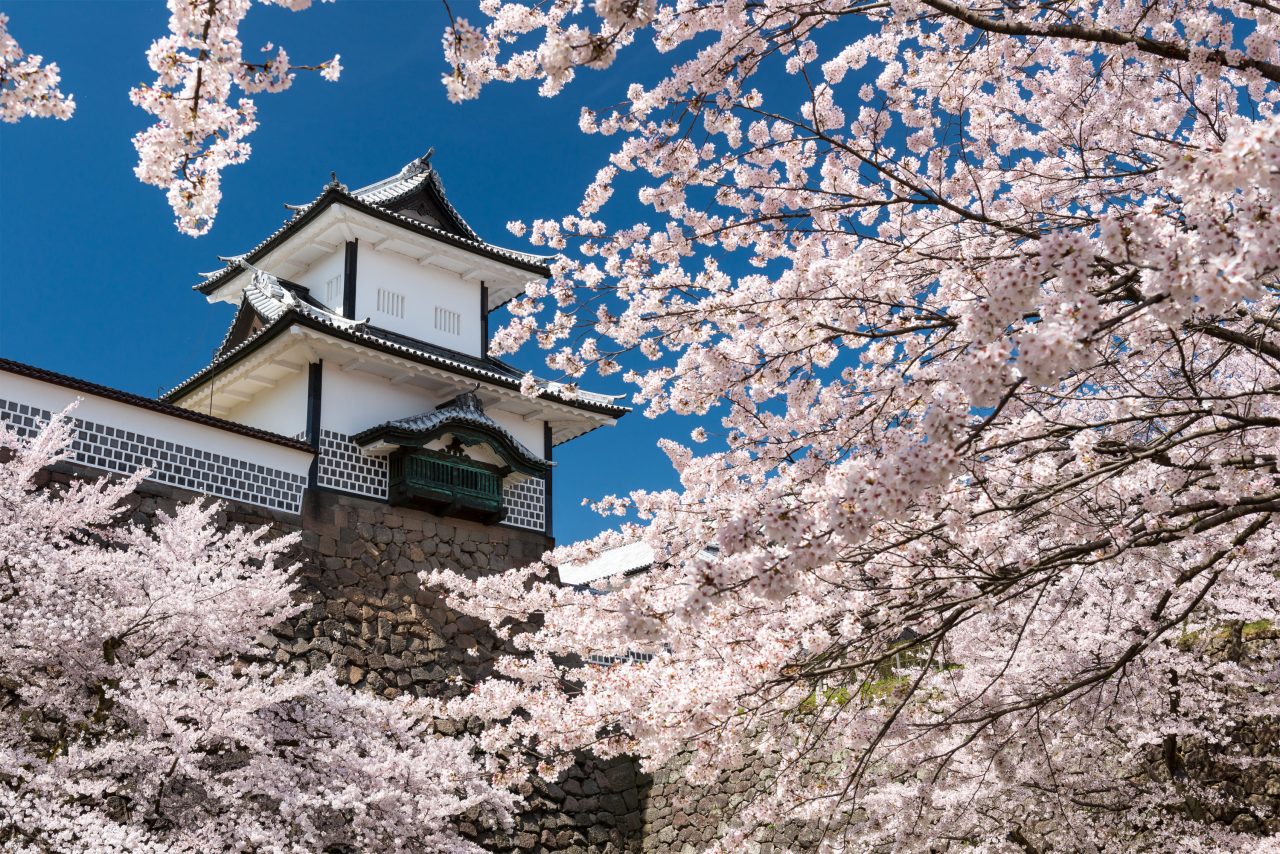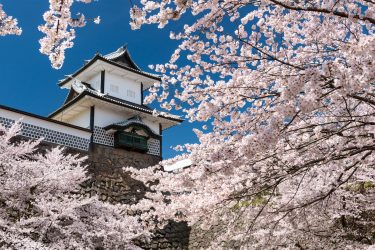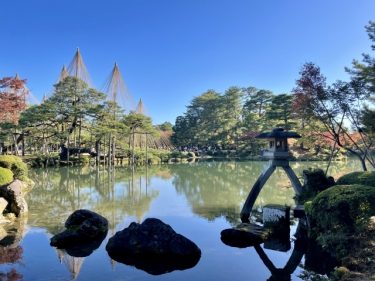The History and Highlights of Kanazawa Castle
Kanazawa Castle is a historic fortress that flourished as the residence of the Maeda family, rulers of the Kaga Domain, throughout the Edo period. The castle was originally built around 1580 on the site of the Kanazawa Mido, a base of the Kaga Ikko Ikki, after it was seized by Shibata Katsuie, a retainer of Toyotomi Hideyoshi. His nephew, Sakuma Morimasa, constructed the early version of the castle. Later, Maeda Toshiie took over the castle, solidifying the foundation of the Kaga Domain.
Situated between the Sai and Asano rivers, Kanazawa Castle utilized the natural topography for defense as a “hirayama” (hilltop) castle. One of its major features is Ishikawa Gate, a symbol of the castle and an important cultural asset that retains much of its original structure from the Edo period. The gate’s stone walls are built with two distinct techniques: kirikomi-hagi (precisely cut stones) on one side and uchikomi-hagi (rough-cut stones) on the other, making it a rare example in Japan. The walls were rebuilt in 1765, showcasing the expertise and artistry of Edo-era masonry.
Notable structures include the Hishi Yagura, Gojikken Nagaya, and Sanjukken Nagaya, which served both as watchtowers and storehouses. The Gojikken Nagaya, in particular, is a two-story building standing 17 meters tall from the stone wall, playing a critical role in the castle’s defense.
While many parts of the castle were destroyed by fires over the centuries, several areas have been meticulously restored, including the Kahoku Gate and Hashizume Gate. These restorations help preserve the castle’s historical significance and offer visitors a glimpse into Kanazawa’s past.
Beyond its military function, Kanazawa Castle symbolized the cultural and political power of the Maeda family. The castle grounds once featured beautiful gardens and ponds, blending utility with artistry. Today, the castle, together with neighboring Kenrokuen Garden, serves as a prominent tourist destination where visitors can immerse themselves in Edo-period architecture, samurai life, and the rich history of the Maeda clan.
Highlights of the Kanazawa Castle Area
The surrounding area of Kanazawa Castle is filled with historical and cultural treasures. Visitors to the castle are encouraged to explore the nearby attractions that showcase the depth and beauty of Kanazawa’s heritage.
First, adjacent to Kanazawa Castle is Kenrokuen Garden, one of Japan’s most famous gardens and a must-see spot. Known as one of the “Three Great Gardens of Japan,” Kenrokuen is renowned for its seasonal beauty, featuring cherry blossoms in spring, vibrant autumn foliage, and snow-laden trees in winter. The garden’s vast grounds are filled with ponds, bridges, teahouses, and the iconic Kotoji Lantern, a favorite spot for photography.
Kenrokuen Sightseeing Guide: How to Enjoy Its Seasonal Beauty
Between Kanazawa Castle and Kenrokuen lies Kanazawa Castle Park, offering a serene environment for walking and relaxing. With expansive lawns and scenic paths, visitors can enjoy views of the castle and its impressive stone walls. The park also serves as a place of leisure for locals, creating an opportunity for tourists to experience daily life in Kanazawa.
To the north of Kanazawa Castle is the 21st Century Museum of Contemporary Art, a popular destination for fans of modern art. The museum’s cutting-edge exhibits, including the famous “Swimming Pool” by Leandro Erlich, provide a striking contrast to the historical surroundings of the castle and samurai residences.
A short distance away, the Nagamachi Samurai District offers a glimpse into the lives of Kanazawa’s samurai class. Here, visitors can explore well-preserved samurai houses and streets lined with mud walls and stone paths. The Nomura Family Residence is a standout attraction, where you can tour a restored samurai home, complete with intricate woodwork, traditional furnishings, and a beautiful garden.
Lastly, just a stroll from Kanazawa Castle, Omicho Market offers a bustling atmosphere where visitors can enjoy fresh seafood and local produce. Known as “Kanazawa’s kitchen,” this market has served the city’s residents for centuries, and today, it’s a vibrant spot for both locals and tourists to experience Kanazawa’s culinary delights.
These sites together create a comprehensive experience of Kanazawa’s history, art, nature, and food, making it a rewarding destination for any traveler.
Nagamachi Samurai District: Experience Samurai Life
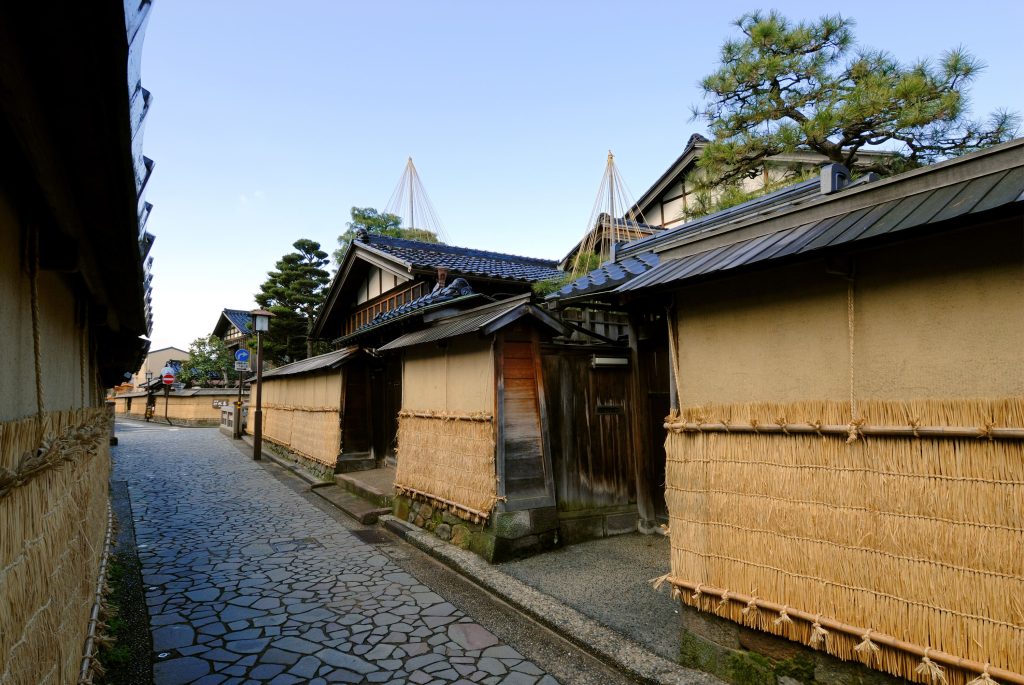
The Nagamachi Samurai District is a well-preserved area where mid-ranking samurai of the Kaga Domain once lived. This district offers a rare opportunity to experience the traditional lifestyle of the Edo-period samurai. Thanks to minimal fire damage over the centuries, many of the original structures remain intact, giving visitors a tangible connection to the past. The streets are lined with earthen walls and stone pavements, evoking the quiet dignity of the samurai era. Especially during winter, the traditional “komo kake” practice, in which straw mats are wrapped around the earthen walls to protect them from snow, adds a unique seasonal beauty.
Nomura Family Residence
A visit to the Nomura Family Residence offers a closer look at a prominent samurai household. The Nomura family served as direct retainers of the Maeda clan and held significant posts within the Kaga Domain. The residence features a beautiful garden designed in the pond-circuit style, as well as rooms with intricate woodwork and tatami flooring, allowing visitors to imagine the lifestyle of a high-ranking samurai.
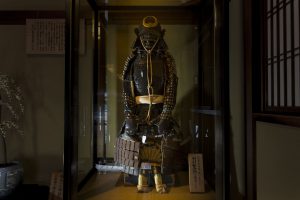
Takada Family Residence
The district also features the Takada Family Residence, home to a mid-ranking samurai family. The residence’s distinguishing feature is its nagayamon, a long gate structure that marks the entrance. Inside, visitors can explore rooms where samurai retainers once lived, as well as a garden fed by the Onosho Canal, an essential waterway in Kanazawa’s history.
Ashigaru Museum
Another notable site is the Ashigaru Museum, where you can see the simpler homes of the ashigaru, or foot soldiers. Although they held a lower status than the samurai, the ashigaru were essential members of the domain’s military force. Their homes, while more modest, still adhered to the architectural principles of samurai residences, emphasizing function and modest beauty.
The Nagamachi Samurai District is not only a testament to Kanazawa’s samurai past but also a place where you can appreciate the city’s blend of historical preservation and modern charm. Whether you’re walking along the stone-paved streets or visiting one of the district’s many cultural sites, Nagamachi offers a window into a bygone era.

